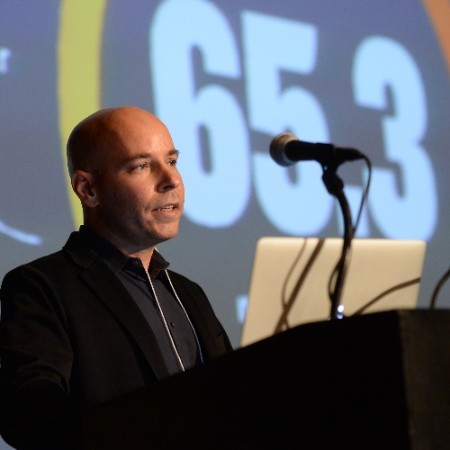Have you entered your local bank branch lately and had a sudden urge to open a new savings account or just to deposit more money? Have you felt like the bank employees are treating you really nicely?
Well, don’t worry – they didn’t put anything in your water. It’s just the result of visiting a LEED certified bank branch, according to research conducted by University of Notre Dame management professors Edward Conlon and Ante Glavas. Their study of 562 PNC branches was focused around the question if the business performance of LEED-certified workplaces exceeds that of non-LEED-certified workplaces. Their answer was a resounding yes - Conlon and Glavas found that the difference between certified and non-certified bank branches equals $461,300 per employee.
You might be surprised that the next chapter in the search after the business case for sustainability is focused on LEED certified bank branches, but given the growing investments of banks in this area it actually makes a lot of sense. Bank of America reported in its latest sustainability report that it “expanded the total leadership in LEED-certified space to 16 percent of our total workspace…Our goal is to have 20 percent of our corporate workspace portfolio LEED-certified by 2015.” Deutsche Bank is another example of a bank interested in green building, and it reported in its last CSR report that 18 of its office buildings are LEED-certified. And there is, of course, PNC with nearly 100 of its branches that are LEED-certified.
The benefits of LEED-certified buildings are nothing new. From energy consumption to water use – these benefits are well-known. According to the U.S. Green Building Council, for example, operating costs decrease 13.6 percent for new construction and 8.5 percent for existing building projects. A 2010 study from Michigan State University even provided quantitative support to another benefit associated with green buildings – the impact of improved indoor environmental quality on perceived health and productivity in occupants.
Still, Conlon and Glavas provide us with a valuable piece of the puzzle we didn’t have before – the impact of LEED certification on the results of a service-based business. The study looked into 562 PNC branches, 93 LEED-certified and 469 that aren’t, and the results were as followed:
1. Compared to non-LEED-certified facilities, LEED-certified facilities annually opened up 458 more consumer deposit accounts and had $3,032,000 more in consumer deposit balance per facility per year.
2. LEED-certified facilities also opened up 25.5 more consumer loan accounts and had $994,900 more in loan balance per facility per year.
3. The revenue in LEED-certified facilities was greater than non-LEED facilities.
4. On the other hand, there was no significant effect of LEED certification on business deposit accounts, while there was a negative and very small effect on business loan accounts with 1.09 accounts less per year being opened.
From the results it seems clear that the LEED certification made a difference when it comes to personal accounts. The reason is somewhat less clear. The researchers offer two explanations based on the assumption that the consumer experience resulting from transacting with a LEED-certified facility is better.
They explain that either the staff at a LEED-certified facility “provide better service as a result of improved working conditions as well as a greater employee identification with the values of the employer,” or that “consumers, independently of the experience of transacting with the enterprise, were attracted to a provider of financial services that embraced environmental sustainability.”
PNC customers in this research weren’t surveyed so we can only make an educated guess as to the reason they do more business at PNC LEED-certified branches. My own guestimation is that it probably has to do more with the former rather than with the latter. I truly doubt how many PNC customers actually know which branch is LEED-certified and which isn’t and how much of a difference it makes to those who do know in comparison to factors like distance from home/work or the level of service.
Another interesting finding is that while the LEED certification made a difference for individuals for one reason or another, it didn’t make any difference for businesses. Actually, the only difference that was found was negative, but it was very small so I believe we can assume businesses are indifferent to the LEED certification. Why is that? Owners of business accounts weren’t being surveyed, but the researchers assume this result has to do with the fact that businesses are more likely to choose their financial service provider based on cost and convenience rather than the greenness of the branch.
Even with this research there’s still a lot that we don’t know about the effects of LEED certification on the performance of service-based businesses like banks and the reasons behind them. Nevertheless, this research provides another building block in our growing understanding of the business case for sustainability. It definitely provides banks that invest heavily in LEED certification with incentives to start measuring not only the certification’s negative impact on the cost side but also its positive impact on the revenue side.
[Image credit: Rick Crocker, Flickr Creative Commons]
Raz Godelnik is the co-founder of Eco-Libris and an adjunct faculty at the University of Delaware’s Business School, CUNY SPS and the New School, teaching courses in green business, sustainable design and new product development. You can follow Raz on Twitter.

Raz Godelnik is an Assistant Professor and the Co-Director of the MS in Strategic Design & Management program at Parsons School of Design in New York. Currently, his research projects focus on the impact of the sharing economy on traditional business, the sharing economy and cities’ resilience, the future of design thinking, and the integration of sustainability into Millennials’ lifestyles. Raz is the co-founder of two green startups – Hemper Jeans and Eco-Libris and holds an MBA from Tel Aviv University.














